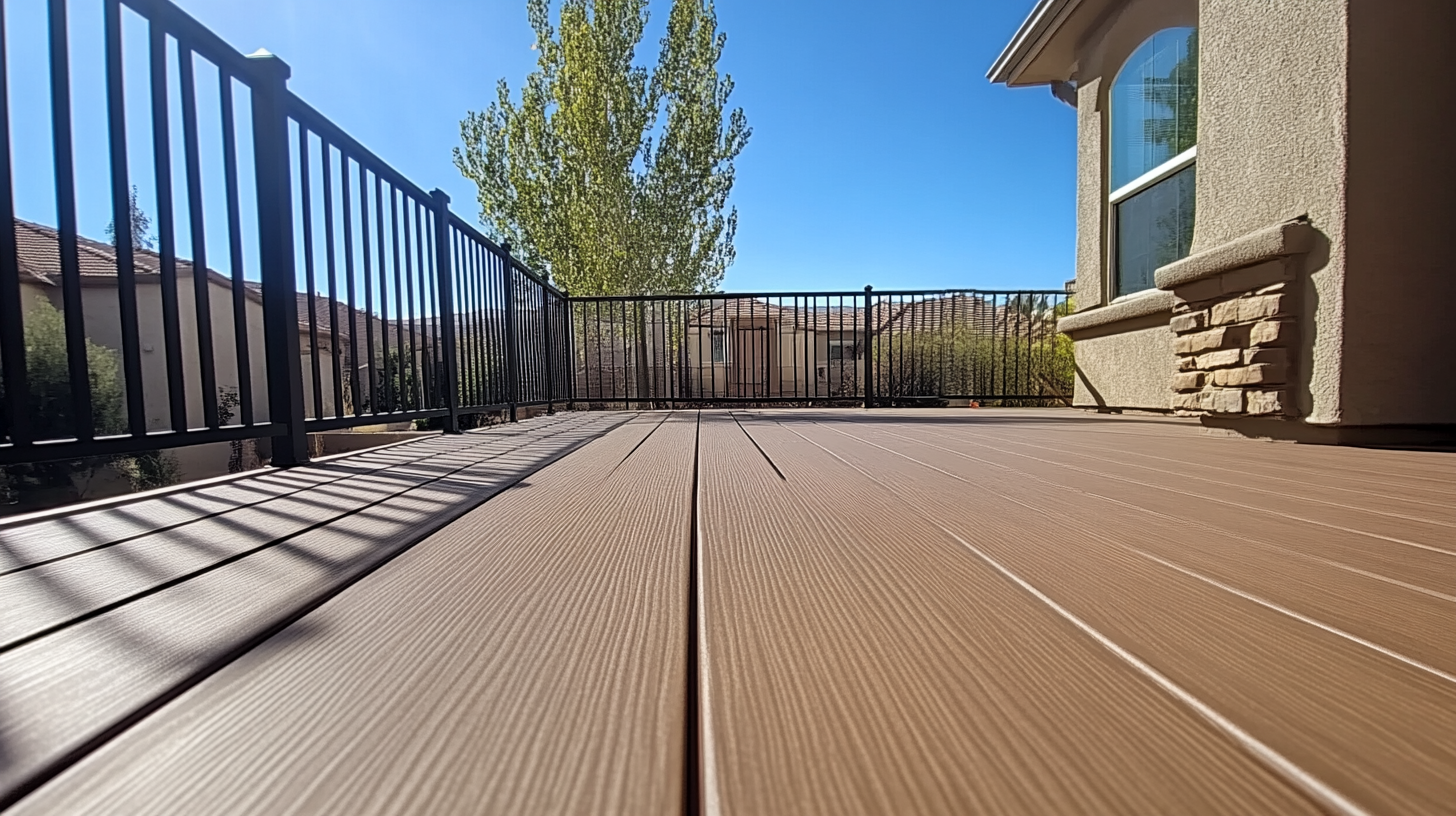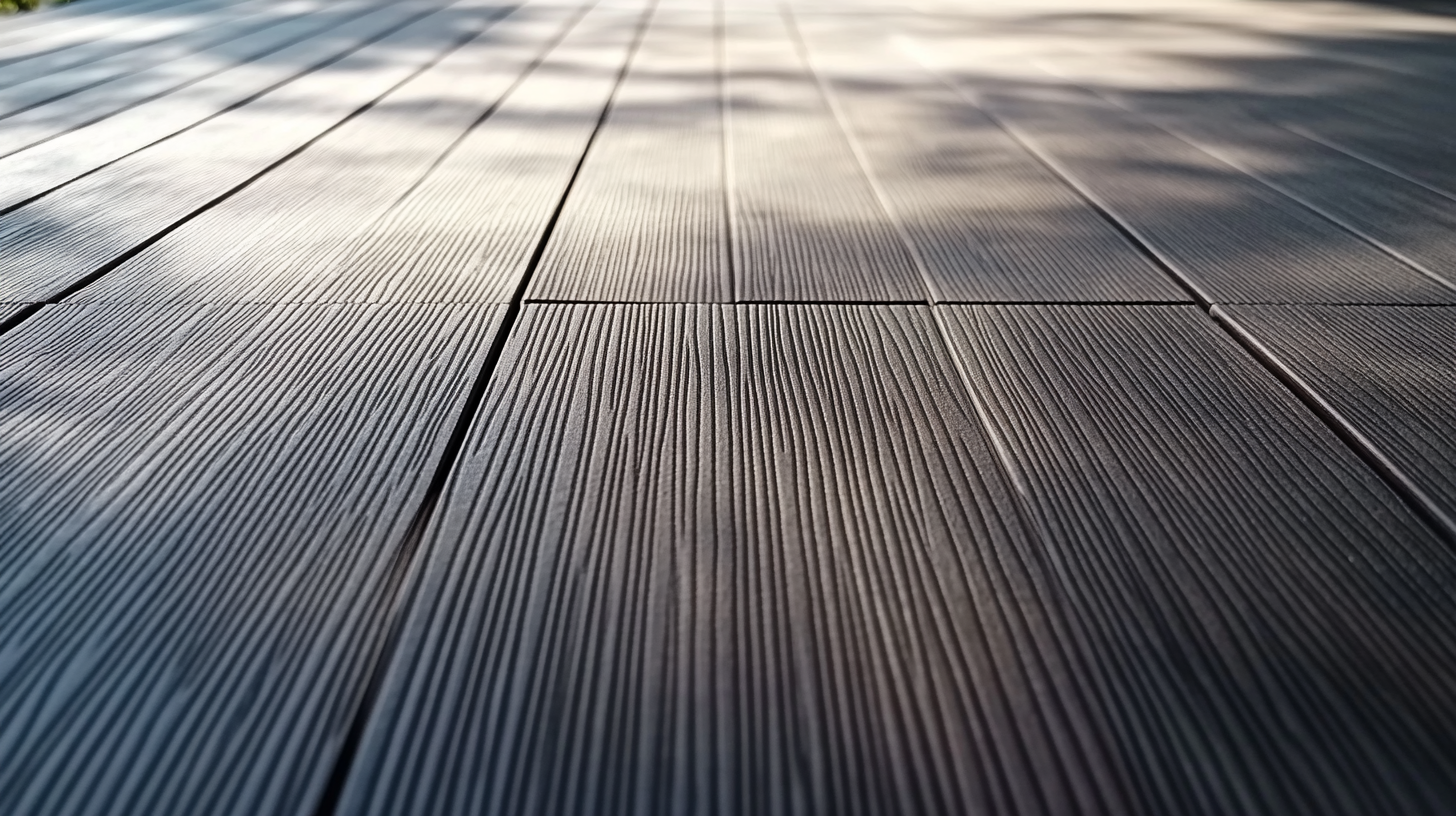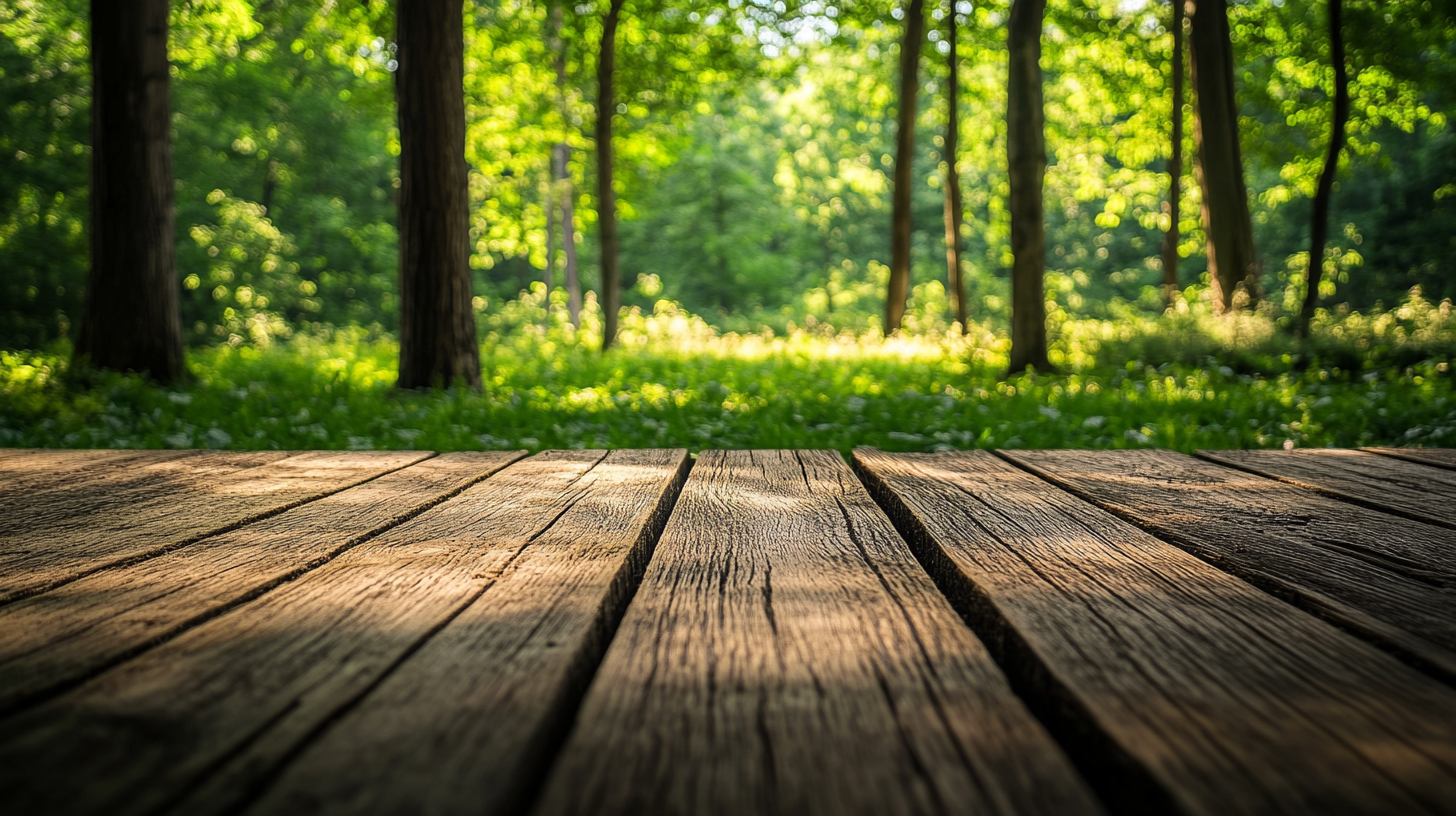
Drawing in futuristic glimpses of outdoor living, WPC decking has proved to be a game changer. This composite material composed of wood fibers and plastic is rapidly becoming an all-the-rage material internationally in terms of durability, low maintenance, and aesthetic appeal. This WPC decking is projected to be the victor in dominating the global market by 2025 as homeowners and establishments are looking for products that are sustainable while still being quality to cater for the outdoor spaces.
The growth of WPC decking is not a mere fad trending today; a larger metamorphosis is happening around the themes of practical utility-considered places. With further urbanization into mainstream living, WPC has come in as an answer for making gardens, patios, and balconies aesthetic getaways. In this sector, the blog will define the moving forces behind the projected higher acceptance of WPC decking while holding an assessment of its avant-garde features, environmental safeguards, and future changes that would embolden its standing in outdoor design.

With ongoing changes to urban settings, sustainable outdoor solutions are more in vogue than ever. As the trend of plogging-or jog with litter picking-picks up momentum, more people are coming to terms with the necessity of clean and amenable outdoor spaces. A recent finding by Global Sustainability Institute claims that cities with accessible green spaces have seen a 15% increase in community wellbeing scores, pointing to the undeniable role of these areas in the sustainability of urbanism. The demand for materials supporting these sustainable initiatives is a subject of great interest. Wood-Plastic Composite (WPC) decking, which makes use of recycled materials, is set to take the steering wheel of outdoor materials by 2025. According to the International WPC Market Report, the WPC decking market is expected to grow at a CAGR of 11% in the next five years, which is largely driven by urban planners and architects searching for new solutions to reduce carbon footprints while adding value to public and private spaces. Further, the switch toward sustainable environments for outdoor living has merged perfectly with ever-increasing urbanization. Though durable and easy-maintenance, WPC decking has become the first preference of city residents who are more inclined toward building sustainably. Reports indicate that products from WPC can actually help reduce the reliance on hardwoods which are unsustainably logged. The greater that awareness of urban environmental issues matures, the incorporation of WPC decking into outdoor spaces will be looked upon not just as a change in construction materials, but as an attitude toward responsible living in an urban environment.

The market for outdoor decking is definitely in for a change, as by 2025, the trend has veered towards Wood-Plastic Composites (WPC) decking. The following key motivating variables propelling this rapid growth along with the easily accessible market for WPC decking, either for deck or patio, are those which refer to individual household and commercial premises. Referring to a recent report by MarketsandMarkets, the forecast shows that the WPC market will reach $8.33 billion in 2025 and grow with a CAGR of 11.2% from 2020. This growth mainly occurs because of the increased sustainability in construction practices and consumers' growing needs for outdoor solutions requiring little attention in maintenance.
One of the market's main driving forces is the increasingly growing concern about environmental issues. WPC decking usually consists of recycled materials making it possible to consume less virgin wood and keep the carbon footprint down compared to traditional decking materials. The demand for eco-friendly products has led to an increase in innovations within the WPC sector and eventually improved the WPC appeal. The consumer perspective on sustainable materials in residential and commercial projects continues to fortify the position of wood-polymer composites in the market, according to Grand View Research.
It also has the testimony of adopting WPC decking because of its long-lasting feature and aesthetic appeal. Over twenty-five years of life expectancy, it does not fade, splinter, or suffer damage from insects, making it a highly economical solution for outdoor spaces. Reports claim that WPC has all the appearances of natural timber, but it offers greater durability-simply making it a designer's and consumer's attractive option for their applications. With outdoor spaces being discovered by home improvement and leisure trends, commercial WPC decking will be material in just a few years.

The evolution of outdoor spaces necessitates the selection of decking for aesthetic purposes, as well as to satisfy functionality.-Daily WPC decking is increasingly considered preferable to traditional timber and other materials because of its benefits. It is on the threshold to getting more than $2.2 billion in market value within the year 2023, and continues to rise at an annual rate of over 7.1% all throughout 2032. Thus, outdoor environments will continue to be redressed for the modern lifestyles that rapid urbanization and growth of the construction sector are creating.
While wood does fade, splinter, and rot, WPC decking offers outdoor building construction with an eco-friendly, long-lasting material. Unlike wood, which morphemes constant maintenance and wears from environmental elements, WPC is also resistant to moisture, insects, and fading. It means that the developers and homeowners can afford longer and better solutions to life without the excessive maintenance that comes with natural wood. Besides, WPC products can be manufactured using recycled materials, resulting in more propriety to the planet while still making it attractive to some green tree-hugging consumers.
While traditional wood has a certain kind of classic appeal, it often suffers from cracking and rots in wet conditions. Other alternatives such as vinyl might be relatively easy to maintain but fail to provide that natural texture. WPC decking can be said to fit into perfect golden measures because it has durability, maintenance friendliness, and beauty. Hence, it is the most sought-after item in several outdoor projects. As the development of WPC technology progresses, its path to commanding the global market remains unhinged with regards to meeting the needs of modern outdoor spaces.

The use of outdoor areas as extensions of indoor living space has made quality and good-looking materials such as Wood Plastic Composite (WPC) decks into a hot commodity. Revolutionary innovations in the WPC arena, along with substantial improvements in durability and elegance, help to make it such a coveted product for decking. Low-maintenance outdoor products are in vogue among consumers, especially with attributes such as weathering, insect, and fading resistance. The latest analysis of the market suggests that the valuation of the global WPC market will significantly approximate $7.6 billion by 2025, thus showing the growth potential of these advanced technologies.
The aesthetic enhancement coupled with durable materials is not limited to decking but rather is reflective of trends in health and beauty. Reports indicate that there has been a surge in demand for personalized aesthetic treatments, with estimates suggesting that the aesthetic medicine market is expected to reach nearly $212.5 billion by 2032. This further underlines a cultural shift towards prioritizing aesthetic value intertwined with functional longevity across a multitude of industries. As medical spas embrace technology to personalize treatments, WPC manufacturers are pouring investment into design and composite innovations to fit a variety of consumer tastes.
WPC decking is simply bound to be a product that will reign in outdoor spaces, for it fulfills the requirements of exterior spaces where beauty and function are of the utmost consideration. New manufacturing advancements allow for more intricate designs and textures, sometimes at the compromise of strength. Following the WPC marketing trend heading into 2025 will thus become an indication of a much bigger global trend toward sustainable, stylish, and functional outdoor living environments, allowing WPC to stand as a leader in the world market.
As the global market for wood plastic composite (WPC) decking continues to expand, several regions are emerging as leaders in adoption and innovation. According to a report by the Freedonia Group, the U.S. WPC decking market alone is projected to reach $2.2 billion by 2025, driven by a growing preference for eco-friendly materials in outdoor spaces. Evidence of a strong transformation toward more sustainable construction in North America and Europe is reflected in the buying decisions of consumers, who are focusing more on durability and minimal environmental impacts.
In Europe, the demand for WPC decking is gaining momentum, particularly in countries like Germany, France, and the UK. A recent study from Research and Markets reveals that the European market for WPC materials is expected to witness strong growth at a CAGR of 9.5% through 2025. Increased investment in outdoor leisure spaces and emerging conceptual landscaping solutions that blend with nature also contribute to this growth.
Other regions with excellent potential in the use of WPC decking are Asia-Pacific, particularly with rapid urbanization and a developing middle-class demographic yearning for high-quality outdoor lifestyle options such as that in China and India. A report by Mordor Intelligence has stated that the WPC market of Asia-Pacific will enjoy magnificent growth, as projections estimate the compound annual growth rate from 2020 to 2025 at 10.3%. As manufacturers offer appealing and sustainable-designed products in response to this growing demand, so too will change occur within the existing global scenario of WPC decking in coming years.
